You can get your bill history from Ameren by setting up an account. You will need:
- Your account number
- The name that appears on the account (the exact last name as it appears in Ameren’s records).
Or if you already have an on-line account with Ameren…
After you set up an account (or log in if you already have one)…
- Click “View your account summary” as shown in the screen shot below.
- Click “Usage History” as shown in the next screenshot.
- Click “pdf” in the top right of the usage history and e-mail the file to [email protected].
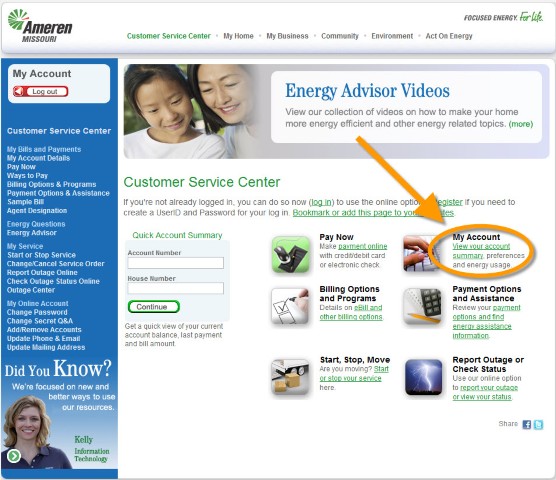
Account Summary
_________________________________________________________________________
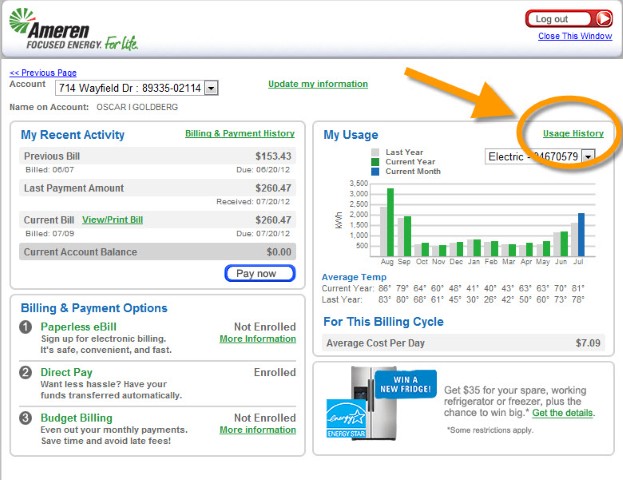
Usage History
JASON PARKER
Jason is a mechanical and electrical engineer and a NABCEP Certified PV Installer™. He owns and manages the daily operations of Certified Solar Solutions, a full-service renewable energy systems sales, engineering, and installation company in Saint Charles. Jason’s electrical engineering career spans 20 years and he has been selling, designing and installing solar energy systems full-time since 2009.
Jason has been a key member of Missouri’s public policy community, drafting proposed legislation, providing Clean Energy Initiative compliance models and market projections, testifying on behalf of the solar industry before the Missouri Public Service Commission (PSC) as well as Committees of the Missouri House of Representatives and Senate. He is acquainted with the Public Service commission’s current Chairman, Doug Gunn, and has participated in negotiations with Ameren and Missouri’s coalition of major electric consumers conducted by the Missouri PSC.
Jason’s local activities include providing solar ordinance guidance and consultation to the cities of O’Fallon, Town and Country, and Clarkson Valley, and several neighborhood and community associations, including Saint Louis’s Central West End Planning Committee. Jason also delivers lectures and presentations on renewable energy and energy efficiency at events and local venues.
Jason is a steadfast advocate for both the environmental and economic benefits of renewable energy.
Before starting his solar business, Jason enjoyed a 20-year professional career designing factories, production lines, and computer-controlled machinery for companies such as Anheuser Busch, Coca-Cola, and ConAgra Foods.
Jason resides in Saint Charles with his wife, Athena, and the youngest three of their five children.
Jason can be reached by e-mail at [email protected] or by phone at 636-244-2445.
Contact Us to experience the benefits of professional service.
DSIREUSA.org
WEATHER
St. Louis Metro Radar (Press Play on map to animate)
PROPERTY INFORMATION
Business Search – Secretary of State
PERMITTING
TOPOGRAPHICAL INFO
CALCULATORS
USGS Seismic Calculator (open with MS Internet Explorer and run–do not save)
SOLAR DATA
UTILITY INFO
SAFETY
OSHA CFR29 Part 1926 – Construction Safety Standards
EQUIPMENT
Coal power's carbon savior could double its water woes
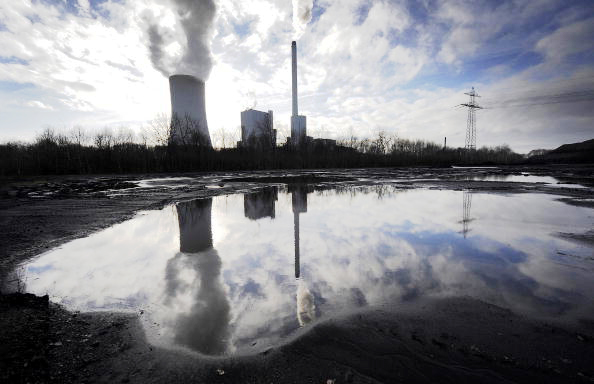
Photo: Volker Hartmann/AFP/Getty Images BY Samuel K. Moore // June 2010
NOTE: this article originally apeared in the IEEE Spectrum Magazine online edition. One of our founders is a long-time member of IEEE and we gratefully acknowledge their publication of this article.
Despite all the talk of moving to greener energy sources, coal will be with us for the foreseeable future. But if we’re really serious about cutting carbon dioxide emissions, coal plants everywhere will need to substantially reduce the billions of metric tons of CO2 they annually emit into the atmosphere. The big hope is that in the next few years the plants will begin capturing and storing a large portion of that CO2 deep underground, in the oceans, or in mineral form.
But the technology needed to capture carbon has a huge downside: It could nearly double the amount of water a plant uses for every kilowatt of electricity it delivers—easily erasing any gains from techniques aimed at conserving water and reducing thermal pollution.
"This technology was not developed in a water-constrained environment," says Jared Ciferno, technology manager for the existing plants program of the National Energy Technology Laboratory (NETL). "The bottom line is that [carbon] capture takes energy, and that translates to additional water use."
Just how much water is pretty shocking. By 2030, the addition of carbon-capture technology would boost water consumption in the U.S. electricity sector by 80 percent, or about 7500 megaliters per day, according to research at NETL, which is operated by the U.S. Department of Energy. For plants in water-stressed areas, that’s a deal breaker. "It is not likely that there is enough water supply available to any of our plants to allow for double the water use," says John Coggins, manager of resource planning at Salt River Project, a water and energy utility in Arizona.
The 80 percent figure assumes that the electricity generation lost to powering the carbon-capture system is made up for by adding more water-cooled coal-fired power. In other words, for a 550-megawatt plant to both capture its carbon and still deliver 550 MW of electricity, it would need to add more than 125 MW of additional generating capability to cover the energy used in capture. If you don’t make up for the lost generation, or make it up in some way that requires no water and emits no carbon—with a wind farm, say—the additional water consumption is more like 40 to 50 percent, according to NETL’s Ciferno.
That’s still a lot of water. For coal power plants, the state-of-the-art carbon-capture technology is known as amine-based wet scrubbing [see "Catching Carbon," above]. It’s basically the technology that puts the fizz in your Fanta. First, the plant’s flue gas is scrubbed of sulfurous nasties; what’s left is a mixture of nitrogen, water vapor, and CO2. An amine solution then reacts with the CO2, yielding a gas stream of mostly nitrogen, which goes out the smokestack, and a CO2-rich amine solution. The solution is heated to strip the CO2 from the amines. The CO2 is then cooled and compressed for storage, and the amines cycle back to pick up more CO2.
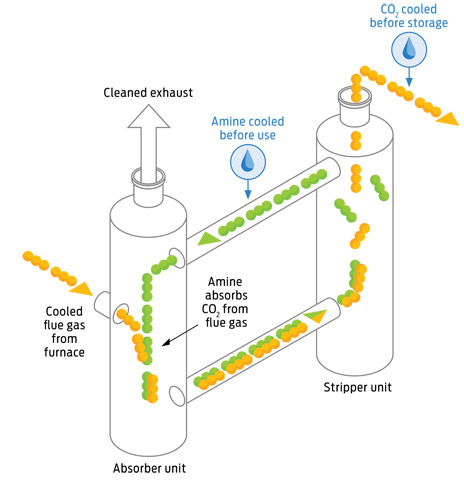
Illustration: Emily Cooper
Catching Carbon: Today’s technology uses chemicals called amines to capture carbon dioxide. Water is used to cool the amines and help compress the captured CO2.
Why does this process demand so much water? It’s all about the cooling. The power plant’s cooling tower carries heat away by evaporating water. Cooling the amines for CO2 absorption—which generates heat in itself—leads to an additional load on the cooling tower, causing more water to be lost. And compressing the CO2 to the supercritical conditions needed for storage requires cooling, too.
—————————————————————————————————–
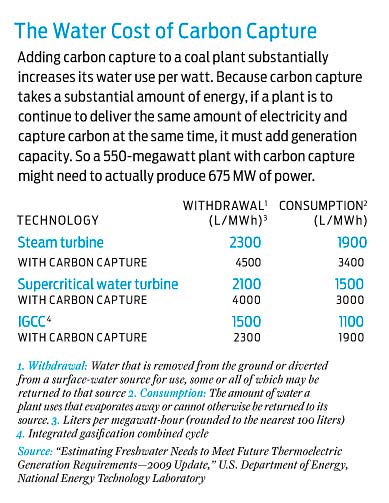
——————————————————————————————————
To really reduce CO2 emissions, says Ciferno, less thirsty forms of carbon capture will have to be developed. His lab is now focused on reducing the amount of energy involved, betting that this will take care of carbon capture’s water woes, too. With a budget of about US $50 million per year and 40 projects, NETL has perhaps the biggest R&D program in this area. The goal is commercial-scale technology by 2020 that can capture 90 percent of a coal plant’s CO2 while increasing the cost of generating electricity at that plant by less than 35 percent.
Industrial firms already have several pilot projects capturing small streams of CO2 at plants in Europe and the United States. However, none have yet been scaled up to the size that would make a noticeable difference in a plant’s water consumption. France’s Alstom Power, for one, uses chilled ammonia instead of amines, which the technology company says should be more energy and water efficient. Alstom tested the process last year with a 20-MW pilot plant at American Electric Power’s New Haven, W.Va., generating station. AEP now plans to use it to capture carbon from 235 MW of the New Haven plant’s 1300-MW capacity, starting in 2015.
Germany’s Siemens Energy has also developed an alternative technology, which relies on amino-acid salts instead of amines. Amino-acid salts pick up more carbon than amines do, so you need to pump and cool less material, says Tony DoVale, president of Siemens Environmental Systems and Services. So far the process has been demonstrated to capture carbon while leaching only 9 percent of a plant’s power, compared to amine technology’s typical 20 percent. That "would ultimately imply half the cooling load," says DoVale.
Of course, unless plant operators are compelled to capture carbon, these energy and water costs won’t be borne at all. "Why would you put on a piece of equipment that puts 10 percent of a plant’s output away if you didn’t have to?" says DoVale.
Carbon capture consumes extra energy to operate, reducing a plant's output and requiring even more fossil fuel to be burned. At best, it's a band-aid. Renewable energy is the long-term solution. Get a quote to find out how to go solar or get a geothermal system, make a positive impact on your carbon footprint, and avoid the rising costs of electricity.
Solar is More Affordable Than Ever
Thanks to Missouri citizen’s demand for electric power that’s cleaner than our coal-intensive generation mix today, several programs are helping Missourians become more independent while they reduce their electric bills without sacrificing their quality of life. Missouri has several key rewards for homeowners and businesses who decide to run their electrical appliances on sunshine–clean power generated by a solar electric system:
- Net Metering. This is incorporated into The Clean Energy Initiative but was actually put in place by the Missouri Net Metering Law that went into effect in 2008.
- A Missouri rebate in the amount of $2 per installed watt.
- Compatibile with the 30% federal tax credit for renewable energy systems.
- Ownership of the Renewable Energy Credits associated with the energy produced by renewable resources.
Net Metering
Net Metering basically says that you have a right to generate electricity and connect your generation system up to the electric grid. It says that you can become a micro-generator and go into competition with the utility company. Don’t get any big ideas about starting up a mini-utility and selling to your friends and neighbors, though, because the program is designed to offset your usage, and not much more. But the good news is that youcan set up a wind turbine or solar electric system and generate your own electricity.
(This is a very brief overview of Net Metering. For a more in-depth look at the subject, see our Net Metering Page.)
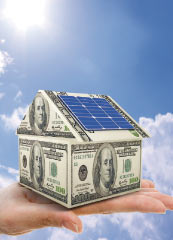
$2 Per Watt Rebate
This is a big deal. You can actually get a check from your utility company for several thousand of dollars to help you pay for your system. Let’s look at this using an example: If you install a 5kW system (5,000 watts) on your house, you will get a check from your utility company (Ameren, KCP&L, or Empire Electric) for $10,000. That’s pretty cool! How would you like to have your utility send YOU a check for a change?
And it gets better… The current regulatory rules say that the check must be sent within 30 days of application. Now, that’s service!
(For a more in-depth look at the Missouri rebate, see our Missouri Rebate page.)
30% Federal Tax Credit
This is a separate program at the federal level that your Uncle Sam has in place to reward you for being smart and making the move to clean, renewable energy. It’s included here because The Clean Energy Initiative to make a huge difference in the cost of a system. This program allows you to receive up to 30% of the cost of the system as a tax credit. What’s a tax credit…? It’s essentially a voucher that you can use to pay your taxes. When you file your taxes, you will have a credit to apply toward any tax liability you might have to the tune of 30% of the cost of your renewable energy system. Wind, biomass, solar electric, solar heat, solar hot water, and more! NOTE: this is a tax matter, so some understanding of tax code is required to maximize your benefit. Consult a tax professional if you have any question about how to best take advantage of this program.
Renewable Energy Credits
A renewable Energy Credit (REC) is like a birth certificate that’s issued every time a MegaWatt of renewable energy is generated. The biggest difference is that companies will buy them in order to show that they are encouraaging the generation of “green” energy to offset their emissions. Right now, the market for REC’s in Missouri is in its fledgling stages. You might even say it’s still in gestation since many of the rules are not even written yet–much less finalized and approved. But stay tuned! We’ll give you the latest news on REC’s as soon as it’s available!
“We are like tenant farmers chopping down the fence around our house for fuel when we should be using nature’s inexhaustible sources of energy. I’d put my money on the sun and solar energy. What a source of power! I hope we don’t have to wait until oil and coal run out before we tackle that.“
-Thomas Edison
Contact Us to find out how you can benefit from these great programs!
Neato keen. Cool hip funky stuff.










